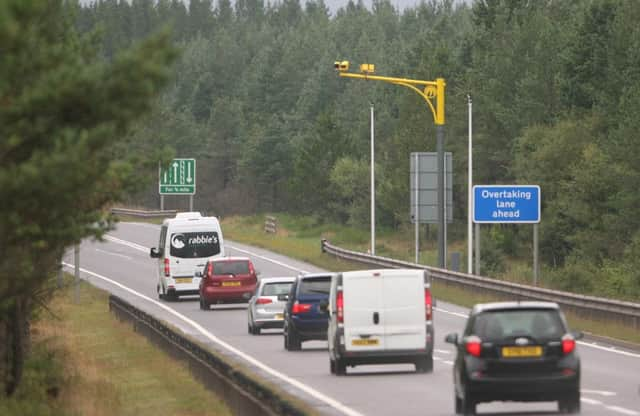Average speed cameras cut A9 summer deaths to zero


However, new figures showed speeding is creeping up again.
The cameras operate on single carriageway sections of the A9 between Inverness and Perth, and the dual carriageway between Perth and the Keir roundabout, near Dunblane.
The Scottish Government’s Transport Scotland agency said deaths and serious injuries had been cut by 38 per cent between Perth and Inverness, and by nearly half between Dunblane and Inverness, between July and August compared to previous years.
Advertisement
Hide AdAdvertisement
Hide AdBut the figures also showed the proportion of drivers breaking the limit has increased to one in six on some sections, after falling to one in ten after the cameras were switched on.
Action was taken against nearly 6,000 drivers caught speeding by the cameras in their first year – or around 15 a day.
Stewart Leggett, chairman of the A9 Safety Group, said: “These most recent figures continue to demonstrate that driver behaviour on the A9 between Dunblane and Inverness has significantly improved.”
“This improvement is taking place despite rising traffic volumes and the busy summer period which saw a number of major events take place, in addition to the seasonal flow of visitors making use of this nationally-important route.”
Neil Greig, the Scotland-based policy director of the Institute of Advanced Motorists (IAM), said: “It’s still early days for the project to be deemed a complete success but the initial indications are really positive. A death-free summer on the A9 is a great result and one the IAM hope can sustained all year round.
“With widening schemes now ongoing, the A9 is entering a new phase in its development, with a further mix of varying speed limits along its length. Constant review must continue to ensure driver behaviour remains safe. With any scheme, complacency can creep in and risk-taking increase.
“High-profile policing on the dualled sections north of Perth [where the average speed cameras do not operate] is an absolutely necessary add on to back up the cameras.”
Colin Howden, director of sustainable transport campaigners Transform Scotland, said: “It’s unsurprising to hear that getting road users to obey the speed limit has cut road deaths. The Scottish Government should now be actively pursuing [average] speed cameras on the rest of Scotland’s trunk road network.”
Advertisement
Hide AdAdvertisement
Hide AdDavid Spaven, Scottish representative of the Rail Freight Group, “This is great news, and must blow a major hole in the case for full dualling of the A9.
“The priority should now be to fund upgrading of the parallel Highland Main Line railway, which is still single track over two-thirds of its length.
“With more and longer crossing loops, or ideally double track throughout, freight trains such as those serving Tesco could be increased in length from 20 to 28 containers – a massive increase in productivity.”